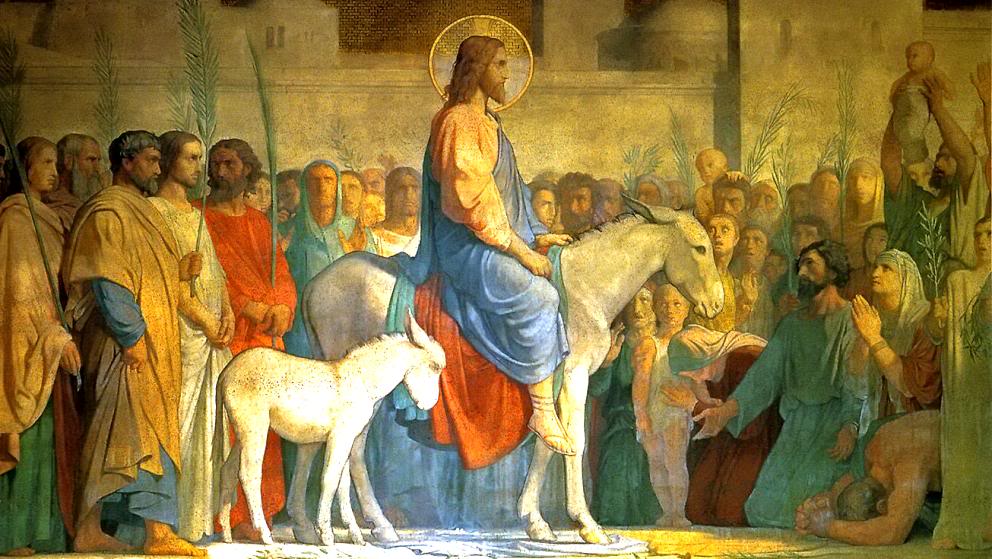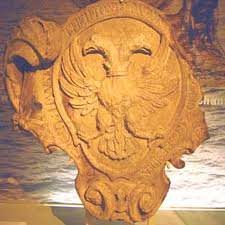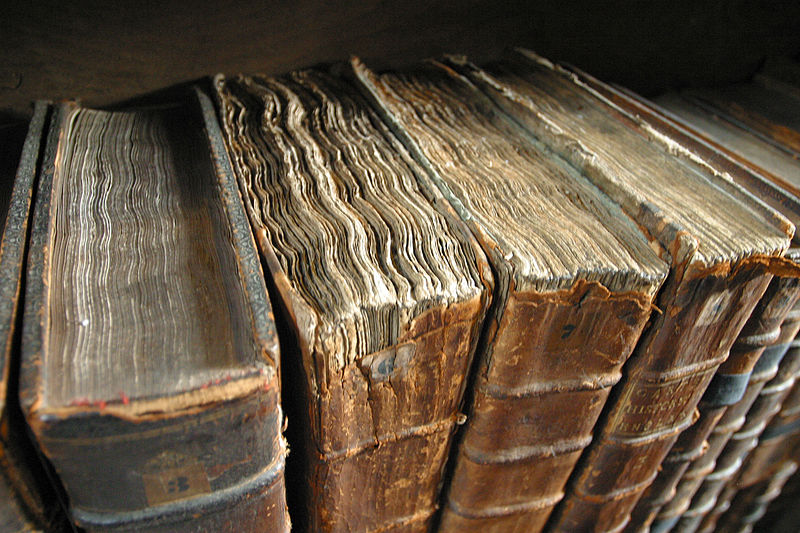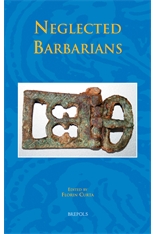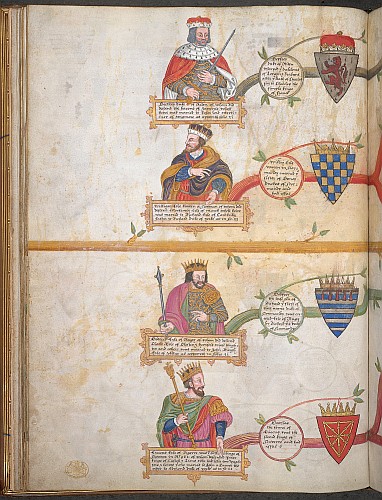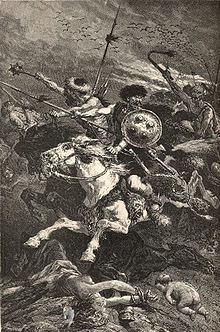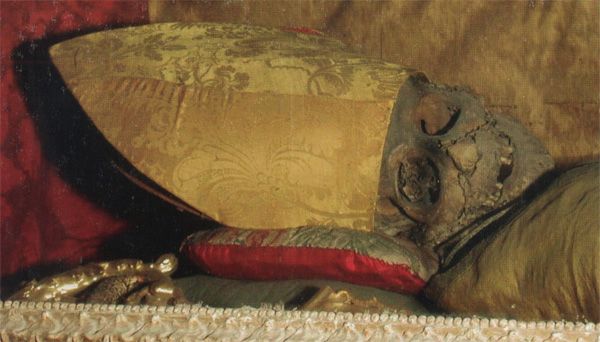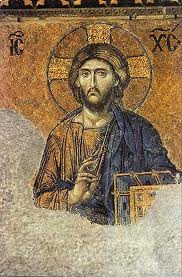Reconsidering Agatha, Wife of Eadward the Exile
The antecedents of Agatha, wife of Eadward the Exile and ancestress of Scottish and English monarchs since the twelfth century and their countless descendants in Europe and America, have been the subject of much dispute…
The Riurikid Relationship with the Orthodox Christian Church in Kievan Rus
Prior to the late tenth century, the princes of the Riurikid dynasty were rulers over the loose collection of pagan Slavic tribes and minor city states that were Kievan Rus. However, in a relatively short period, the dynasty had linked itself and its legitimacy to rule to the Orthodox Christian Church centered in Constantinople.
Ivan the Terrible: Centralization in Sixteenth Century Muscovy
From 1565-1572, the Oprichnina was a land within Muscovy of Ivanís choosing where he alone held sole power. The Zemschina was the remaining portion of Muscovy that was governed by the state administration.
The Rise of Muscovy
Kievan Rus which was founded in 880 was made up of a loose knit alliance between small city states in what is today western Russia. The most powerful of these city states was Kiev. During the early thirteenth century the Mongol continued their march west until they conquered Kievan Rus in 1240.
Christ in Motion: Portable Objects and Scenographic Environments in the Liturgy of Medieval Bohemia
It accordingly seems clear, from many preserved accounts, that by the end of the fifteenth century the rubric of the Church of Prague was no longer the same and that progressive versions contained different layers of alteration to the performance practice of Palm Sunday ritual.
Finland, Tallinn and the Hanseatic League: Foreign Trade and the Orientation of Roads in Medieval Finland
What was the role of Finland in the trade of the Hanseatic League in the Middle Ages? Thisquestion has been widely discussed in Finnish history since 1882, when J.W. Ruuth publishedhis study on the relationship between Finland and the Hanse before 1435.
Medieval bindings: stiff board structures in Slovenian manuscript collection
The paper aims to present the methodology of work used in the research as well as the process of formulating description form related to conservation bookbinding. The paper closes with observations and conclusions drawn from the analysis of the Slovenian collection of medieval codices.
Construction Materials and Building Constructions in the Architecture of Medieval Rus, from the 10th to the Beginning of the 12th Centuries
Construction Materials and Building Constructions in the Architecture of Medieval Rus, from the 10th to the Beginning of the 12th Centuries Bernhard Flüge…
Health and Illness in the Angevin dynasty of the Hungarian Kingdom
‘All the dresses were soaked wet by the sacred blood spilled, inasmuch it resembled an immense overflow of water. He even didst show us apart from these the cut four fingers of her royal highness and the locks of their beloved sons, which were parted from their bodies by Felicián’s sword.’
Infant Burials and Christianization: The View from East Central Europe
This was the second paper in the Early Medieval Europe I series given at KZOO and another fabulous archaeology paper. It contrasted infant grave sites in early converted medieval Poland and Anglo Saxon England.
Bohemian Barbarians: Bohemia in Late Antiquity
The settlement of the Bohemian Basin passed through a very complicated development during Late Antiquity.
Delivering stability: Primogeniture and autocratic survival in European monarchies 1000-1800
Although the dominating position of primogeniture at the end of the period might seem natural given primogeniture’s many advantages for the monarch and the ruling elite it was first rather late in history that the principle came to dominate Europe.
Barbarians to the Balkans
In the High Middle Ages, in a now clearly articulated opposition between the West and the East, Europe and the Balkans began to emerge and be fixed as distinct and hostile entities. In Crusading chronicles, the Balkan lands lay on the way from Europe to the Holy Land. In the late twelfth and in the thirteenth centuries, the conventional separation line between the civilized and barbarian world, identical with the river Danube, began to break down and the barbarians came to be located in the Balkans.
Why There May Have Been Contacts between Slovenes and Jews before 1000 A.D.
The first documented evidence of a Jewish presence in Slovenia dates from the 13th century, when Yiddish- and Italian-speaking Jews migrated south from Austria to Maribor and Celje, and east from Italy into Ljubljana. This is a good three centuries after the first mention of Jews in the Austrian lands.
Jews of Medieval Eastern Europe migrated from Caucasus region, study shows
Despite being one of the most genetically analysed groups, the origin of European Jews has remained obscure.
In search of a missing link: The Bogomils and Zoroastrianism
Both Zoroastrianism and Manichaeism are dualist relig- ions. Implicit in the beliefs held true by these religions is the notion of co-equal and co-eternal principles. Implicit in this notion is the belief that both good and evil exist and are acted upon from the very beginning.
The Morosinis in Hungary under King Andrew III and the two versions of the death of the Queen of Hungary Tommasina
In reality, Charles Robert’s predecessor, the last Arpád, Andrew III, called the Vene- tian, was already a foreigner on the throne of Hungary.
Mummified saints of the Northern Croatian Littoral
European mummies occupy a significant place among the world known mummies.
The Chronicle of Ulrich Richental as an Exceptional Source for the History of Slovakia
One of the most interesting testimonies is the work of a burgher of Konstanz Ulrich Richental, who gave a straight forward account of everyday life in the city during the council, of things he saw, heard or learnt directly from participants in the council.
Fools, Devils, and Alchemy: Secular Images in the Monastery
The fool is one of the most popular and stable character types throughout cultures and times. This is especially true of medieval Europe. The fool, sometimes a jester, sometimes a clown or a trickster, is always recognizable through his abnormal appearance.
Conversion and Empire: Byzantine Missionaries, Foreign Rulers, and Christian Narratives (ca. 300-900)
For a broader modern audience today, if taken somewhat journalistically, Pusicius’ story is an example that cuts along cultural and religious lines that presumably originate in ancient, political divisions and confirm a “clash of civilizations” thesis.
A diplomat in the service of the Kings of Hungary: The activity of the Bishop of Nitra Antony of Šankovce at the end of the Middle Ages
According to this medieval handbook, the work of the diplomat includes: ‘honouring the Church and the Imperial Crown, protecting the rights of the kingdom, strengthening obedience and friendship, agreeing peace, removing the possible causes of future unpleasantness reprimanding tyrants, making rebels obedient…’
The Effects of the Mongol Empire on Russia
This paper looks at the Mongol Empire’s impacts on Russia in terms of religion, art, language, government, and the ultimate rise of Moscow.
Transylvanian Identities in the Middle Ages
Identity has become a subject of historical exploration as it is also one of the themes examined from the perspectives of various disciplines belonging to the social sciences such as sociology, psychology or anthropology.
Noble and Urban Family-Structures in the Late Middle Ages in the Hungarian Kingdom
The everyday life of the clan people was filled with disputes over small plots, since it was the main duty of each generation to preserve and enlarge the lands of the clan. It was also the basic interest of the members of the clans to secure the survival of the clan by marriages that were fertile in every sense. It was a sign of the strength of the clan that the members had to consult before taking decisions in questions of marriage, inheritance.


